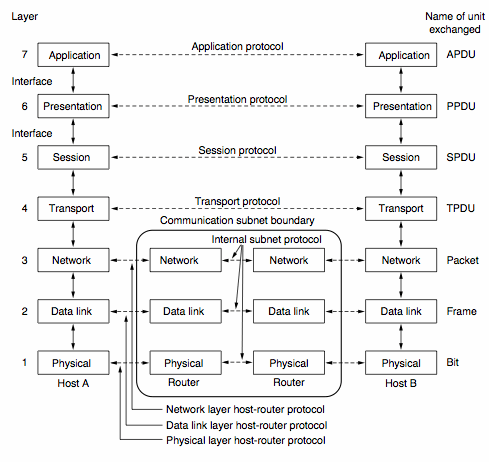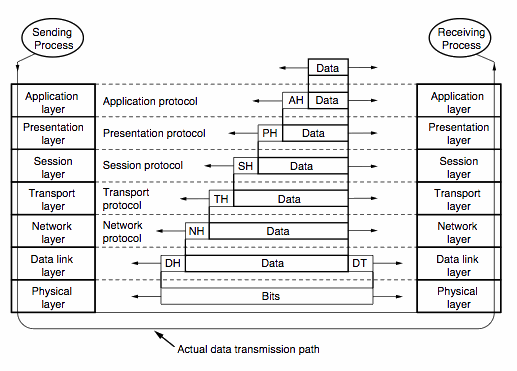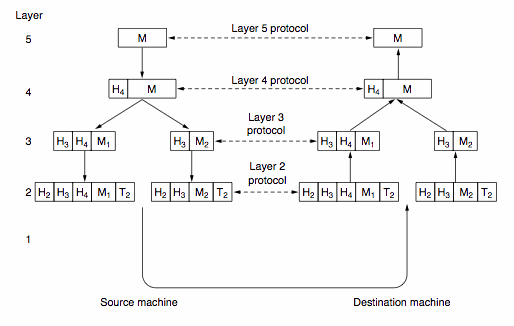Welcome to CITS3002 Computer Networks
This unit introduces students to the design and implementation of
contemporary wired and wireless computer networks,
the systems- and application-level software necessary to support
their efficient operation, and basic security and
privacy factors introduced and enabled by networks and their applications.
Today it is far more likely that a computer is connected to a computer
network than not. As computer networks become increasingly
faster, more reliable, and more pervasive, the way in which we view
computer systems and computing is rapidly changing.
This unit takes a bottom-up approach
to explaining how current networking technologies work and
the security threats and challenges that their use introduces.
The unit is presented in two parts:
Data Communications:
- Starting with an explanation of how data is packaged
on physical media, such as on copper or optical cables, we follow with an
explanation of how errors are introduced and how they can be both detected
and corrected.
- We introduce a series of increasingly reliable
and efficient network protocols which provide guaranteed, reliable message
delivery on error-prone network connections.
- We next introduce local-area Ethernet, wireless, and mobile networks,
and examine the security implications of the use of shared-media networks.
- We next examine the subject of routing protocols which enable messages to
be both correctly and efficiently delivered between computers not directly
connected.
Internetworking:
- We next examine the motivation for and design of the Internet,
and its most frequently used protocols and applications,
examining the general design of the TCP/IP protocol suite,
the impact of the lack of a fundamental security model,
and some common vulnerabilities and defences in using its protocols.
- We continue with a discussion of the design and implementation of
client/server applications using the Berkeley sockets API,
synchronous and asynchronous I/O,
iterative and concurrent servers,
and partially automated approaches to developing network applications.
- We examine the basic building blocks of cryptography,
followed by examples of how and where these are employed
to secure network protocols and network-based applications.
CITS3002 Computer Networks, Lecture 1, Introduction to Computer Networks, p1, 28th February 2024.
Unit Timeline
Showing the growth (and renaming) of related CSSE units:
| Jurassic era |
IT312 Computer Networks
|
| 2000 |
IT312 Computer Networks
IT410 Internet Technologies
|
| 2002 |
IT312 Computer Networks
IT317 Computer and Network Security
IT410 Internet Technologies
|
| 2007 |
CITS3230 Computer Networks
CITS3231 Computer and Network Security
CITS7219 Mobile and Wireless Computing
|
| 2012 |
CITS3002 Networks and Security
CITS7219 Mobile and Wireless Computing
|
| 2016 |
CITS3002 Networks and Security
CITS4419 Mobile and Wireless Computing
CITS5503 Cloud Computing
CITS5506 Internet of Things
|
| 2018 |
CITS3002 Networks and Security
CITS3004 Cybersecurity
CITS4419 Mobile and Wireless Computing
CITS5503 Cloud Computing
CITS5506 Internet of Things
|
| 2020 |
CITS3002 Computer Networks
CITS3004 Cybersecurity
CITS4419 Mobile and Wireless Computing
CITS5503 Cloud Computing
CITS5506 Internet of Things
|
| 2022 |
CITS1003 Introduction to Cybersecurity (restructured CITS3004)
|
CITS3002 Computer Networks, Lecture 1, Introduction to Computer Networks, p2, 28th February 2024.
Some basic networking definitions
- A computer network is an interconnected
collection of autonomous computers.
- Computers are interconnected if they are capable of exchanging
information.
The connections can be over copper wire,
radio frequencies,
optical fibre,
infra-red,
satellite,
microwaves,
pigeons,
barbed wire,
wet
string,
a station wagon,
or a sequence of these.
- Computers are autonomous if there is not a permanent
master/slave relationship between them.
Hence,
a mainframe computer and its traditional peripherals do not constitute a
computer network,
but a desktop computer able to interogate a more modern printer does.
Physically,
a network is the computers and physical media connecting them.
Logically (and more interesting and relevant, here),
a network is the software which connects and secures the computers
their data, and services.
This unit focuses on computer networking software and its support
by operating systems and programming languages.
We will not focus on the physical or transmission properties of the many types of
physical media.
CITS3002 Computer Networks, Lecture 1, Introduction to Computer Networks, p3, 28th February 2024.
Why do users value computer networks?
- Users can access and create shared, distributed and replicated data;
(e.g. the WWW,
online shopping,
B2B,
government information services, ...)
from a variety of locations,
including mobile and wireless services.
- Streamed entertainment services,
movies by subscription, 'catch-up' television, music...
- Users can have their own (limited) computer and access
shared and possibly distant physical resources
(e.g. a local printer,
cloud-based applications and services,
cloud-based backup,
local NAS music server).
- Networks can provide fault tolerance and load balancing -
if some hardware fails or network connectivity is intermittent,
then logical shadowing and delay-tolerant networking
enables data recovery and continued performance
(again, cloud-based services are good examples).
- Permit centralized facilties -
user-administration and file-management,
windowing systems,
remote desktops,
distributed file services with versioning,
and tasks to minimize administration of these services.
- Permit remote collaboration -
instant messaging,
group collaboration and communication (e.g. MS-Teams, Zoom),
software development with continuous integration.
Can you add to this list?
CITS3002 Computer Networks, Lecture 1, Introduction to Computer Networks, p4, 28th February 2024.
Research interests and networking
The combination of some significant problems provides a very rich body of
investigation,
some deep theoretical problems,
and some important research results passed on to industry.
- Unreliable communication -
messages sent over physical media are often garbled or lost.
Programming (sequential and parallel) assumes reliable communication
and this must be provided.
Alternatively, if we accept that errors do occur,
can we still manage to communicate with data loss
(consider Mars probes, mobile communication,
satellite TV and digital telephony)?
- The support and study of temporal and spatial decoupling
of work patterns and communities.
Sociologists are interested in communication and observation at a distance.
- Privacy and security (they are not the same thing) -
industry's desire for electronic commerce and invasive marketing
have driven the fields of authentication (and anonymity?) and encryption,
and governments' desire for surveillance has driven the fields of identity
and communication hiding.
- Parallel programming -
as seen in Hadoop and Map/Reduce models of processing distributed,
the OpenMP and MPI parallel frameworks,
distributed shared-memory,
and "big-data",
Unlike sequential programming, writing, modelling and imagining
the execution of parallel programs is very difficult.
Parallel "activities" which must be resolved in parallel programs
include distributed resource sharing
and deadlock prevention.
Can you add to this list?
CITS3002 Computer Networks, Lecture 1, Introduction to Computer Networks, p5, 28th February 2024.
Discussion question 1
It's tough to make predictions, especially about the future.
Yogi Berra - US professional baseball catcher, manager, coach

|
Make three clear predictions for network technologies,
and their affect on the ways we work and live,
in the near future (say, 2 years),
and longer-term (say, 10 years).
Base your predictions on specific examples or current trends in networking.
For this question,
and in future discussions and assessments,
provide answers with technical sophistication.
Answers of the form
"things will be faster", or
"things will be bigger", or
"things will be smaller", or
"things will be cheaper"
are insufficient.
Similarly, try to remember where you find information -
not just "I read it somewhere".
|
CITS3002 Computer Networks, Lecture 1, Introduction to Computer Networks, p6, 28th February 2024.
Discussion question 2
Hypothesis - Once hardware speeds have become sufficiently fast
(do you believe that that will ever happen?),
hardware (and bandwidth) will become free,
and we'll just be paying for services.

|
- Are there any precedences for this hypothesis?
- What current technologies will disappear within 3 years,
to be replaced by currently emerging network technologies?
|
CITS3002 Computer Networks, Lecture 1, Introduction to Computer Networks, p7, 28th February 2024.
The Need for Network Protocols
Definition: A computer protocol consists of an
agreed format for messages,
expressed by a packet header,
an optional message component,
and a set of rules for the exchange of messages between computers.
We see the use of protocols in Computer Science in almost every activity:
- World Wide Web servers
(Microsoft's IIS, and The Apache Software Foundation's apache)
communicate with
Web clients/browsers such as
Firefox, Chrome, and Edge
using the Hyper Text Transfer Protocol (HTTP),
- electronic mail and news articles are delivered and exchanged
using the Simple Mail Transfer Protocol (SMTP) and the
Network News Transfer Protocol (NNTP),
- some operating systems (such as Linux) display their windows and
graphics using the X-Windows Protocol,
Virtual Network Computing (VNC),
and Remote Desktop Protocol (RDP) display systems,
and
- computers share their local disks using the Network File Systems
(NFS), samba/SMB,
or the Windows-NT File System (NTFS) and Resilient File System (ReFS) protocols.
Most importantly the protocol messages must -
- happen in an agreed to order,
- travel from the sender to the correct receiver(s), and
- contain the correct, unambiguous, data (what arrives must be what was sent).
Equally important -
- time plays a critical role, and
- information will be lost and corrupted and protocols must
account for this.
CITS3002 Computer Networks, Lecture 1, Introduction to Computer Networks, p8, 28th February 2024.
The ISO/OSI Reference Model
With computer networks we require protocols to "meet" new computers,
ask for information,
agree to share data, etc.
The complexity of protocols can be simplified
by separating some of the functions required into different protocols,
and isolating "layers of responsibility" into different protocol modules.
For example,
- at the lowest level we are concerned with correctly transmitting
bits (0's and 1's) of data.
- at another level we may be interested in transferring files between
different computers which support different data type representations.
One solution to such separation of responsibilities is provided by the
Open Systems Interconnection / International Standards Organization
OSI/ISO reference model.
(This model was finally agreed upon and standardized in 1983).
Until about twenty years ago (until the end of the last millenium),
the OSI protocol suite was still actively sought
in all tender specifications by the Australian and U.S. governments.
Today, the Transmission Control Protocol/Internet Protocol (TCP/IP)
suite meets nearly all of our networking needs.
While TCP/IP employs a 4-layer model,
in contrast to the 7-layer ISO/OSI model,
many identical concepts may be observed.
CITS3002 Computer Networks, Lecture 1, Introduction to Computer Networks, p9, 28th February 2024.
The ISO/OSI Reference Model, continued
While [the ISO/OSI] model may or may not be a good way to organize
real, live computer networks,
it makes an excellent framework for organizing a book about them.
Andrew Tanenbaum, Computer Networks (2/e), 1988
|

The deployment and acceptance of networking standards can be difficult,
as evidenced by the irony of this early marketing literature:
IBM is the only company that's shipping end-user
networking software that conforms to OSI standards. The OSI
stamp is important because it assures corporate users that
the networking software will easily connect to other vendors'
systems and software.
IBM marketing literature, 1987
|
CITS3002 Computer Networks, Lecture 1, Introduction to Computer Networks, p10, 28th February 2024.
Why a Layered Model? Why 7 Layers?

Why 7 layers, why not 3, why not 10?
The following principles were followed :
- A layer corresponds to a different level of abstraction.
- Each layer provides a well defined, independent function.
- Within each layer unique protocol standards should be enforceable.
- There should be a minimum of traffic between layers/across interfaces.
- The number of layers should be sufficiently large that distinct
functions are in different layers and that there are not too many layers.
Today we could argue that networking involves two additional layers:
- Politics
- Money
CITS3002 Computer Networks, Lecture 1, Introduction to Computer Networks, p11, 28th February 2024.
The ISO/OSI Reference Model - layer-upon-layer

1. The Physical Layer
is responsible for transmitting a (raw) bit stream over the physical
communication medium.
As such it is concerned with the electrical and mechanical interface
between the data and the physical medium.
The physical layer presents a bit stream to the layer above.
CITS3002 Computer Networks, Lecture 1, Introduction to Computer Networks, p12, 28th February 2024.
The ISO/OSI Reference Model, continued

2. The Data-Link Layer
takes the bit stream from the physical layer and constructs logical chunks
of data termed frames.
The purpose of framing is to ensure the reliable transmission of
information by performing limited error detection and recovery.
CITS3002 Computer Networks, Lecture 1, Introduction to Computer Networks, p13, 28th February 2024.
The ISO/OSI Reference Model, continued

3. The Network Layer
is responsible for providing the connection between "end systems"
across a network.
These connections might include multiple, intermediate links
and are intended to be independent of the (sub)networks used to transmit
the data.
Network layer functions include:
- routing: deciding how to transmit frames between source and
destination using addresses.
- relaying: enables data transfer (transparently) across
intermediate (sub)networks.
- flow control: matches traffic flow with the physical capacity of a
transmission path.
- sequencing: control ordering of frames across a network.
CITS3002 Computer Networks, Lecture 1, Introduction to Computer Networks, p14, 28th February 2024.
The ISO/OSI Reference Model, continued

4. The Transport Layer
provides a reliable end-to-end service independent of the network
topology.
This is achieved by splitting messages into network sized packets
and joining them back together again at the other end.
The transport layer often supports multiplexing to optimize
network cost (several transport connections mapped into a single network
connection) or
splitting to enhance services (single transport to multiple
connections).
CITS3002 Computer Networks, Lecture 1, Introduction to Computer Networks, p15, 28th February 2024.
The ISO/OSI Reference Model, continued

5. The Session Layer
is the first upper layer crucial to internetworking
and manages the dialogue between end systems.
Typically the session layer provides:
- establishment and closing of connections.
- synchronization to allow checking and recovery of data.
- negotiation of full and half duplex communication.
CITS3002 Computer Networks, Lecture 1, Introduction to Computer Networks, p16, 28th February 2024.
The ISO/OSI Reference Model, continued

6. The Presentation Layer
provides a standard format for transferred information by overcoming
compatability problems between systems using dissimilar data encoding rules
and (possibly) different display (input and output) technologies.
CITS3002 Computer Networks, Lecture 1, Introduction to Computer Networks, p17, 28th February 2024.
The ISO/OSI Reference Model, continued

7. The Application Layer
provides the interface between the application processes.
In particular,
functions such as file transfer,
remote job execution (remote procedure calls)
and application independent virtual terminal support are provided.
In overview, the application layer provides transparency to the users,
load balancing between machines,
data bases (banks and airline reservations),
and the prospect of distributed operating systems.
CITS3002 Computer Networks, Lecture 1, Introduction to Computer Networks, p18, 28th February 2024.
Discussion question 3
On 26 March 2015 Australia's controversial
Telecommunications
(Interception and Access) Amendment (Data Retention) Bill 2015,
was passed into law by the Australian Parliament.
With reference to the ISO/OSI reference model of computer networking,
data from which layers is retained under this Bill?
 |
Consider mobile phones as providing an obvious case-study -
the information collected will include:
- who (actually, which device, a phone number or SIM card number)
is calling who (another device);
- what time was the call started, and finished;
- how many bytes of data was transfered;
- BUT NOT the words of the conversation itself.
|
May be of interest:
CITS3002 Computer Networks, Lecture 1, Introduction to Computer Networks, p19, 28th February 2024.
|


 CITS3002
CITS3002 help3002
help3002 CITS3002 schedule
CITS3002 schedule